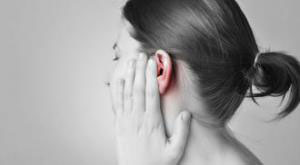Otitis Externa is one of the most common conditions of the ear. It is the inflammation of the external auditory canal (ear canal) with or without the external ear(auricle). It can be classified into Circumscribed Otitis Externa (Folliculitis), Diffuse Otitis Externa (Swimmer’s Ear) and Necrotizing Otitis Externa (for immunocompromised patients). It is sometimes associated with Otomycosis or the fungal infection of the ear canal.

Symptoms
Most common symptoms are;
- ear pain
- hearing loss
- ear discharge
- ear itchiness
- tinnitus or ringing in the ears
- swelling of the external ear or the surrounding areas.
The usual history for this condition involves prior exposure of the ears to water like in swimming/water diving activities,trauma or insertion of foreign objects inside the ear canal and cleaning of the ears by the patient himselfwith cotton buds or ear curette.
Diagnosis and Treatment
Progression of the symptoms requires immediate consult with an ENT surgeon. Head and neck physical examination would usually be done. Otoscopic findings are usually sufficient for diagnosis. A simple palpation of the auricle for tragal tenderness can also give out the diagnosis. Treatment is comprised of application of topical antibiotics with an anti-inflammatory component usually in otic drops preparation. It can be combined with oral antibiotics if the condition is severe. Intravenous antibiotics are reserved for refractory cases and patients with other co-morbidities.Ear suctioning can also be done to remove debris. If there is presence of diffuse swelling of the ear canal, a cotton wick can be inserted to facilitate the application of the otic drops. Pain relievers are also beneficial. An important part of the treatment is to keep the patient’s ears dry at all times and avoid ear manipulation. Following up with the ENT doctor is also an essential part of the treatment.

